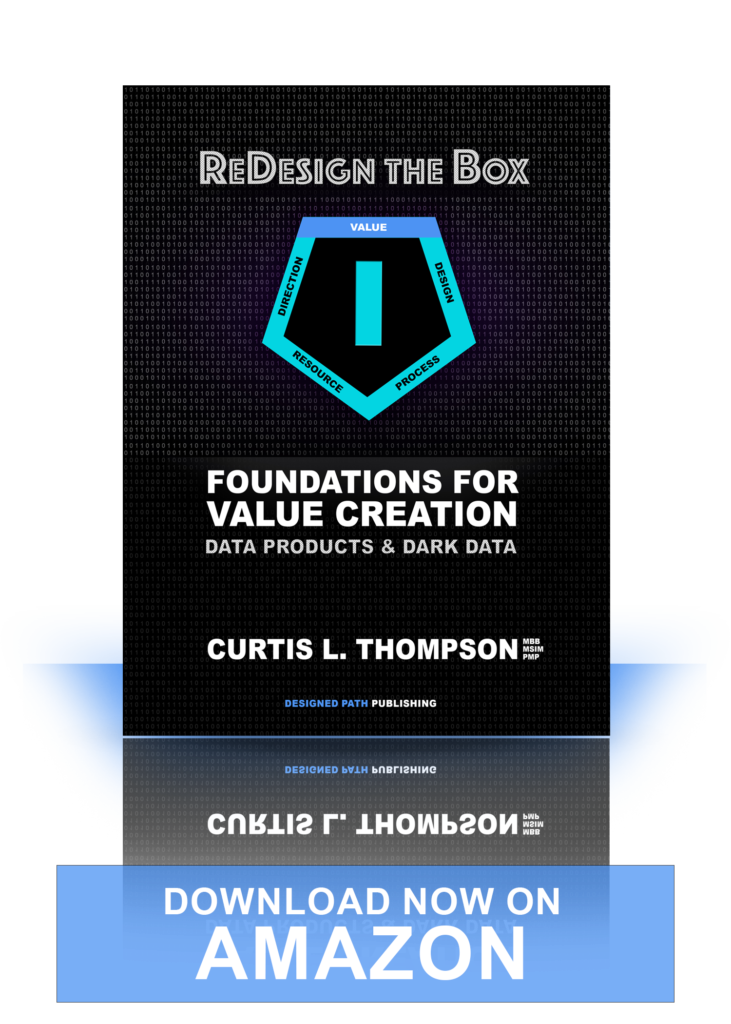Attracting and recruiting top talent remains a significant challenge for many organizations. In a shrinking but currently over-expanded economy, and competitive job market, companies need to stand out to prospective candidates. The employer brand, establishing competitive compensation packages, and consistently creating a more ideal work culture are critical elements in attracting high-caliber individuals.
Along the path of generating interest, attracting strong candidates, gaining their interests, recruiting them, and onboarding there is an enormous trough of dark data. This unknown and ambiguous information is an untapped reservoir of unstructured data that interfaces with organizations and lives within them as well. This diamond mine of information can be very impactful to recruiting efforts and is waiting to be discovered, exposed, and utilized. Across many fortune 500 companies nationwide, dark data, is emerging as a game-changer in the recruiting arena. According to a study by Gartner, a staggering 80% of organizational data is unstructured1. By developing initiatives to capture and utilize dark data, leaders can begin to have a clearer view of the immense influence and gravitational impacts dark data has on every facet of the recruiting process.
Dark data analytics provides a unique lens through which organizations can enhance their recruitment efforts. By analyzing unstructured data from various sources, including communication channels and candidate interactions, businesses gain insights into candidate preferences, behaviors, and hidden talents. This allows for a more targeted and personalized recruitment process. A survey by LinkedIn reveals that 67% of talent professionals believe that data-driven decision-making is crucial for the future of hiring2.
Furthermore, dark data can serve as a crystal ball for predicting future talent needs. By analyzing historical data and unstructured information, organizations can forecast trends in hiring, identify emerging skill requirements, and proactively build pipelines for critical roles. IBM reports that organizations using predictive analytics for talent acquisition are 3.6 times more likely to outperform their peers in profitability3.

Understanding candidate preferences is key to creating a positive candidate experience. Dark data allows organizations to personalize their engagement strategies based on insights gleaned from unstructured data sources. According to a CareerBuilder study, 68% of candidates believe the candidate experience is an indicator of how a company values its people4. Although personalization is typically used in marketing programs those same strategies and tactics can be employed successfully in recruiting. By understanding your talent audience, personalizing an organization’s messaging and the recruitment experience an organization can maximize recruitment success.
Dark data isn’t just about insights; it’s about streamlining processes. By leveraging analytics and applying the intelligence created from the analytics to the recruitment personalization process, organizations can automate routine recruitment tasks, identify bottlenecks in the hiring process, and enhance overall efficiency. A survey by SHRM indicates that 68% of HR professionals believe that automation improves the candidate experience5. A mixture of automation, personalization, dark data, and intelligence empowers organizations to tailor their communication, ensuring an ideal candidate-centric experience.
Once talent is acquired, retaining and engaging employees becomes paramount. Employee turnover is costly and disruptive, and companies invest in strategies to foster job satisfaction, work-life balance, and professional development. Providing opportunities for career growth and recognizing and rewarding employees for their contributions are essential for retaining top talent.
Dark data provides a unique opportunity to understand what engages and retains employees. By analyzing unstructured data from communication channels, surveys, and feedback, organizations can tailor employee experiences. According to Gallup, companies with high employee engagement see 59% less turnover6. Dark data holds the key to creating a workplace where employees feel heard and valued.

The rapid pace of technological change has led to a skills gap in various industries. Organizations face the challenge of ensuring that their workforce possesses the necessary skills for current and future demands. Implementing continuous learning and development programs is crucial for upskilling employees and keeping their skills relevant in evolving industries.
Closing the skills gap remains a challenge for organizations globally. Dark data can shed light on employees’ learning preferences, areas of interest, and proficiency levels. By harnessing this data, companies can develop personalized learning paths, ensuring continuous skill development. LinkedIn’s 2021 Workplace Learning Report indicates that 94% of employees would stay longer at a company if it invested in their career development7.
Promoting diversity and inclusion is not only an ethical imperative but also a strategic advantage. Many companies struggle with creating inclusive environments that embrace individuals from diverse backgrounds. Addressing unconscious biases, fostering diverse leadership, and creating an inclusive culture are ongoing efforts to build diverse and high-performing teams.
Diversity and inclusion initiatives are critical for innovation and success. Dark data, when analyzed with a diversity lens, reveals patterns, biases, and opportunities for improvement. McKinsey’s research affirms that diverse and inclusive companies outperform their peers by 35% and diverse executive teams are 21% more likely to outperform their counterparts8. Dark data, when harnessed, becomes a powerful tool for building a workforce that mirrors the diversity of the world around us.
The rise of remote work, accelerated by global events like the COVID-19 pandemic, presents new challenges and opportunities in talent management. Organizations need to adapt to managing remote teams, ensuring effective communication, and maintaining a sense of connection and belonging among employees who may work in different locations. A solid strategy for handling remote work options has become essential to retaining top talent.
Successful remote work isn’t just about productivity; it’s also about employee well-being. Dark data allows organizations to gauge the well-being of remote employees by analyzing communication patterns, collaboration levels, and stress indicators. A Harvard Business Review study reveals that 89% of employees believe their well-being directly impacts their performance9.
Effective talent management includes planning for the future leadership of the organization. As companies recognize the significance of grooming future leaders, the role of dark data can be a tool that improves the future shape of effective succession strategies. Succession planning is crucial to identify and develop internal talent for key roles. It ensures a smooth transition in leadership and minimizes disruptions when key executives retire or move on. Succession planning has become a cornerstone for organizations aiming for long-term resilience. According to a report by the Corporate Leadership Council, companies with effective succession planning are 1.7 times more likely to be high performing10.
The well-being of employees has gained increased attention in recent years. Burnout, stress, and mental health issues can significantly impact productivity and morale. Companies are now investing in well-being programs, flexible work arrangements, and mental health support to create healthier and more resilient work environments.
The well-being of employees is a growing concern for organizations. Dark data can provide nuanced insights into stressors, satisfaction levels, and well-being indicators. Businesses that prioritize employee well-being experience a 21% increase in profitability, as reported by Gallup11.
Talent management is a multifaceted challenge that requires a holistic approach. Successful organizations recognize that their people are their most valuable asset and prioritize initiatives that support recruitment, engagement, development, and the overall well-being of their workforce. As an aide to talent management, dark data is not merely a byproduct of daily operations; it is a strategic asset waiting to be leveraged that can revolutionize talent acquisition processes and outcomes. By foraging into the diamond mine of value hidden in dark data, leaders can navigate the talent recruitment process with elevated precision and success. Furthermore, leaders can enhance the growth of their organizations by using dark data as a foundational tool that supports in the creation of organizational workplaces that attract, engage, retain, and nurture the brightest minds.
References
- https://www.gartner.com/en/newsroom/press-releases/2017-10-04-gartner-says-80-percent-of-enterprise-data-is-dark-data ↩︎
- https://business.linkedin.com/talent-solutions/blog/trends-and-research/2019/global-talent-trends-report ↩︎
- https://www.ibm.com/cloud/blog/3-key-ways-predictive-analytics-transforms-talent-acquisition ↩︎
- https://www.careerbuilder.com/advice/candidate-experience-survey-2017 ↩︎
- https://www.shrm.org/hr-today/trends-and-forecasting/research-and-surveys/Documents/SHRM-2019-HR-Technology-Report.pdf ↩︎
- https://www.gallup.com/workplace/284180/improve-employee-engagement-workplace.aspx ↩︎
- https://learning.linkedin.com/resources/workplace-learning-report ↩︎
- https://www.mckinsey.com/business-functions/organization/our-insights/why-diversity-matters ↩︎
- https://hbr.org/2021/05/a-study-of-80000-people-reveals-the-biggest-factors-in-daily-well-being ↩︎
- https://www.ccl.org/wp-content/uploads/2015/04/SuccessionManagement.pdf ↩︎
- https://www.gallup.com/workplace/309242/gallup-economic-loss.aspx ↩︎





